Hosta Care: The Ultimate Guide To Planting and Growing Plaintain Lilies
Hostas are one of the most popular garden plants for shade, and for good reason. They’re so easy to grow! With these gardening tips on Hosta care, planting and growing Hostas is a breeze.
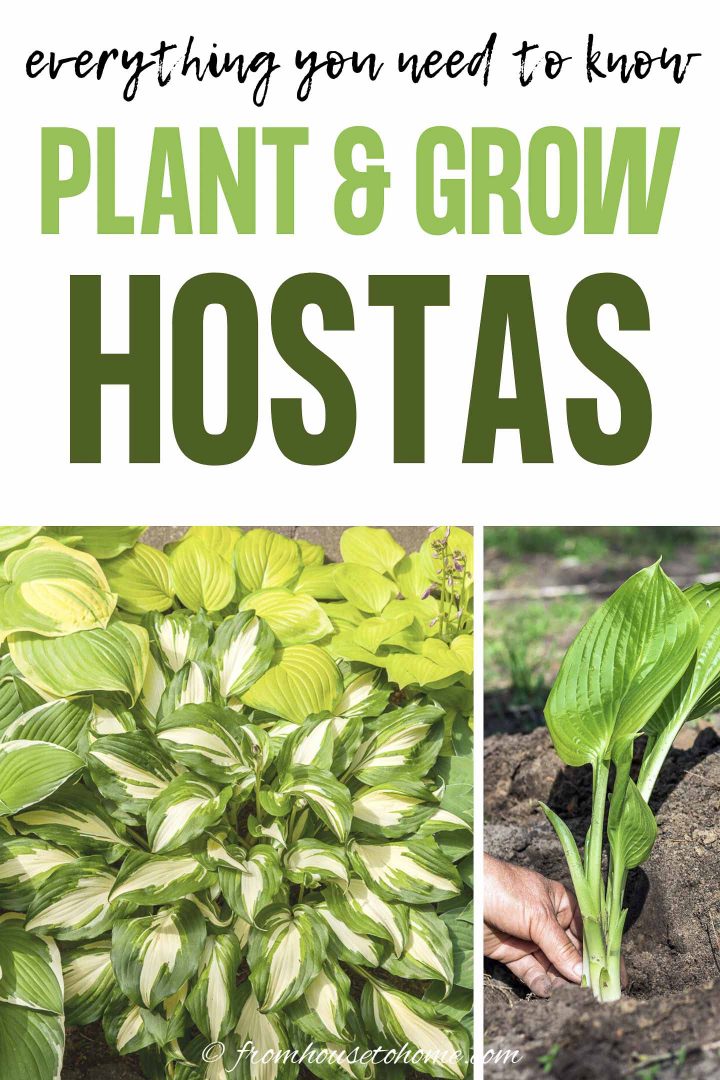
Hostas (also called Plaintain Lilies or Funkia) are one of the most common plants in home gardens for a reason.
They have lush foliage, are easy to grow, don’t require much maintenance, some have fragrant flowers, and they thrive in the shade. What’s not to love?
Since they have been so popular with gardeners, there are now over 2500 cultivated varieties, all with different sizes, colors and textures.
You could create an entire garden out of Hostas and not run out of plants!
So I think I’m justified having more than just one or two of them in my garden 🙂
And now I’m passing on all of the gardening tips for Hosta care that I’ve picked up over the years.
What You’ll Learn
Click the links below to skip right to a section if you know exactly what you’re looking for
Where To Grow Hostas
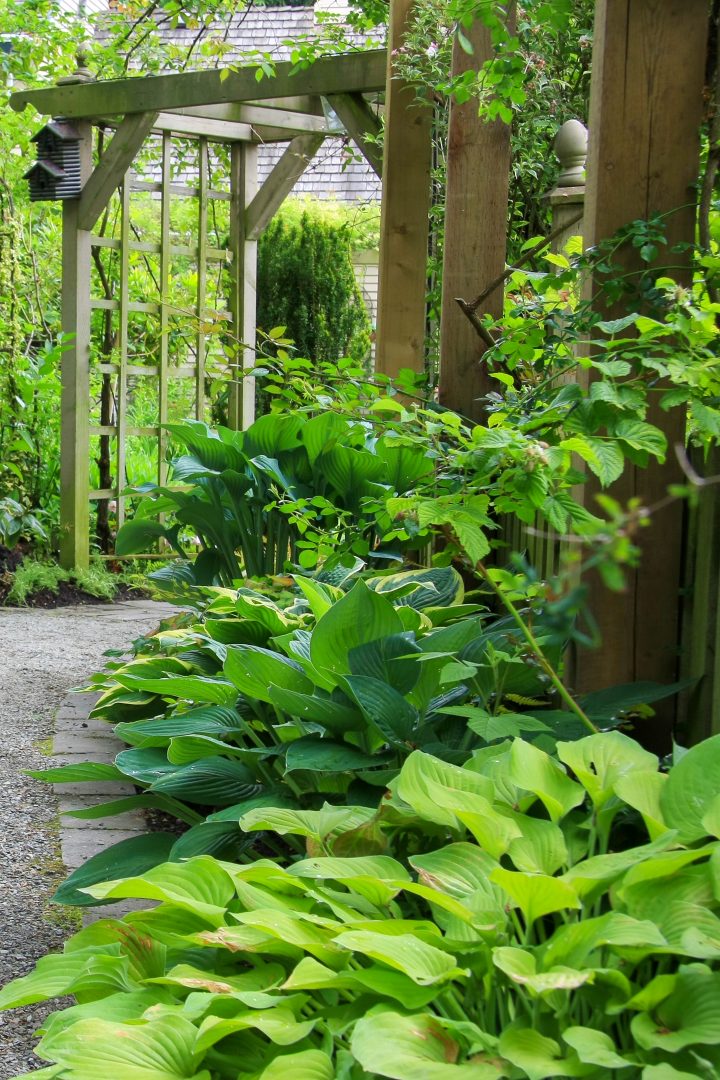
Zones: 3 to 9
Light: Shade to Part Shade
Height: 4 inches to 5 feet (depending on the variety)
Spread: 6 inches to 6 feet (depending on the variety)
The thing that first draws most people to these plants is where Hostas usually grow…in the shade.
Hostas are one of the few plants that not only survives, but thrives in the shade.
They do well on the north side of the house or growing under bushes and trees where many other plants struggle.
Since most varieties grow in zones 3 to 9, they are also available in many different areas of the country.
In The Shade
How much shade a particular Hosta will take depends on the variety and leaf color of the plant.
In general:
- The green-leaved varieties are the most shade tolerant. (See our list of shade-tolerant Hostas HERE).
- Hostas with blue foliage will retain their color best in moderate shade. The blue will bleach to green if these varieties are planted in too much sun. (Read our list of blue varieties HERE).
- Dappled sun is best for the variegated varieties to reach their full potential. (Find our list of variegated Hostas HERE).
- Hostas with a lot of white in the leaves need some light to retain their color but burn easily if they get too much. Planting them where they got morning sun but afternoon shade will keep them happy. (See our list of white Hostas HERE).
- Yellow-leaved Hostas can usually take more sun than other varieties. As can many of the fragrant Hostas. (Find yellow-leaved varieties HERE).
In The Sun
If you want to try growing Hostas in the sun:
- Select varieties that are sun tolerant. (See our list of sun-tolerant Hostas HERE).
- If possible, plant them in an area that gets shade during the hottest part of the day.
- Make sure to put down a good layer of mulch around them and water frequently to keep them healthy.
- The further north you live, the more likely it is that you’ll be successful growing Hostas in the sun.
Plant Sizes
One other thing to keep in mind when you are deciding where to plant your Hosta is how big it is.
- Miniature (less than 8″ tall) and small (8″ to 14″ tall) Hostas work well at the front of the border, in containers, raised beds and rock gardens. (Find our list of miniature and small Hostas HERE).
- Medium-sized Hostas (15″ to 22″ tall) work well as ground cover under larger bushes and small trees. (See our list of medium-sized varieties HERE).
- Large Hostas (23″ to 29″ tall) are great specimen plants or accents on the shaded side of a shrub border. (Find large varieties HERE).
- Giant Hostas (over 29″ tall) are big enough to go at the back of your shade border and can really make a statement in your garden. (Get our list of giant Hostas HERE).
How To Plant Hostas
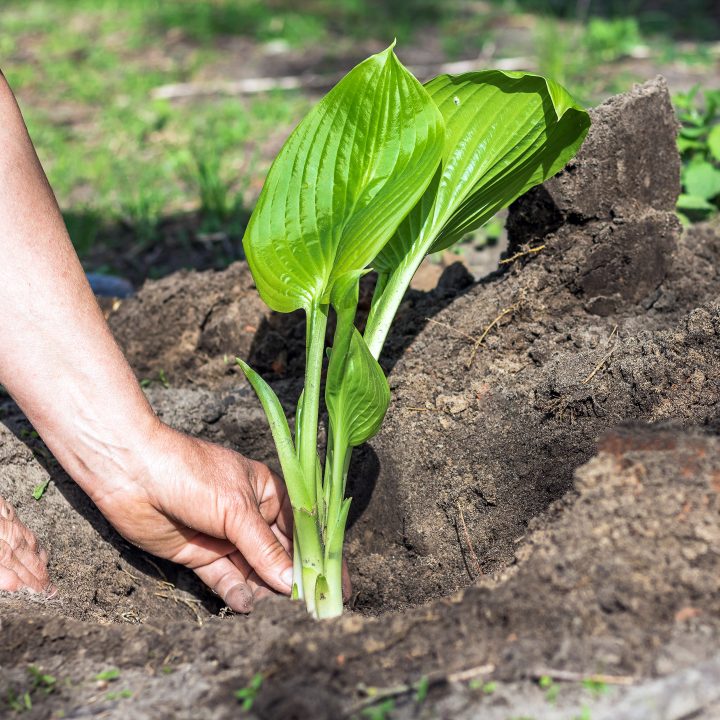
Planting Hostas isn’t much different than planting any other perennial in your garden.
I usually buy and plant dormant, bare-root Hostas in the spring. (You can often find the best selection and prices with bare-root plants.)
Potted Hostas can be planted any time but you’ll find the best selection available in the spring and early fall.
If you have very heavy clay or sandy soil, it should be improved before you plant by digging in plenty of compost or triple mix.
Dig a hole that is about 1 1/2 times the width and depth of your pot (or big enough for the entire bare-root to fit in with room to spare).
Set the plants with the crown even with the surrounding soil and the growing tips visible at the soil surface. For potted plants, this should be the same depth they were in the container.
Make sure to leave enough space between your plants. Your Hostas may be small now, but they do like to spread!
How much they spread depends on the variety, so try to find that out when you buy the plant.
If you’re not sure, use these general guidelines for figuring out how far apart to plant them:
- Small Hostas tend to grow to about three times as wide as they are tall.
- Medium-size varieties spread about twice as wide as their height.
- Larger Hostas are at least as wide (if not a little wider) as their height at maturity.
Then fill the hole in with soil around the roots and water well.
How To Grow Hostas
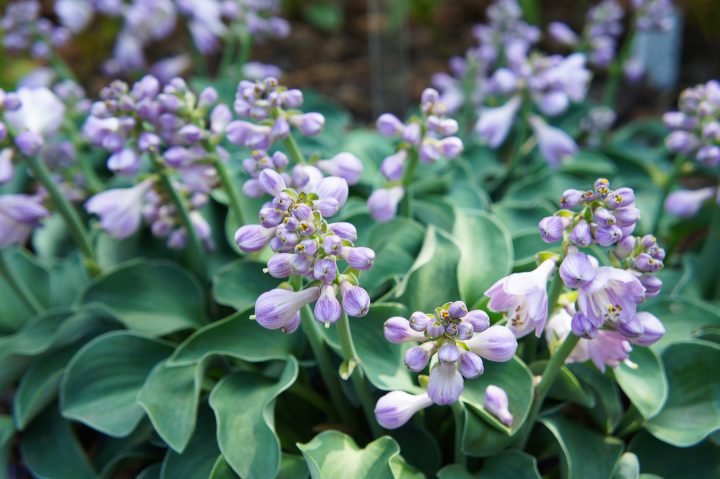
Hostas are easy to grow and don’t take much care and maintenance.
However, they grow slowly and can take 4 or 5 years to reach their full size, especially the larger varieties. So be patient with them.
Soil Conditions
The ideal soil for growing Hostas should be slightly acidic (pH of about 6.5), evenly-moist and humus-rich.
Since Hostas are tough, it is possible to grow them in other environments (like dry, alkaline or even clay soil) but these non-ideal conditions will slow their growth even more than normal.
If you know your location is dry, look for plants with thick, waxy leaves which will tolerate dry soil better than the ones with thin leaves.
Watering
Watering Hostas well is one of the secrets to growing them successfully.
To be happy, they require about 1″ of water per week from spring until fall.
Using soaker hoses or a drip system is the best way to accomplish this, since the large Hosta leaves can prevent overhead water from reaching the soil. Get more information on setting up soaker hoses HERE.
Having said all that, good drainage is also a must.
Hostas will develop crown rot and die if they are left in standing water for too long.
For the same reason, they also should not be watered in the winter.
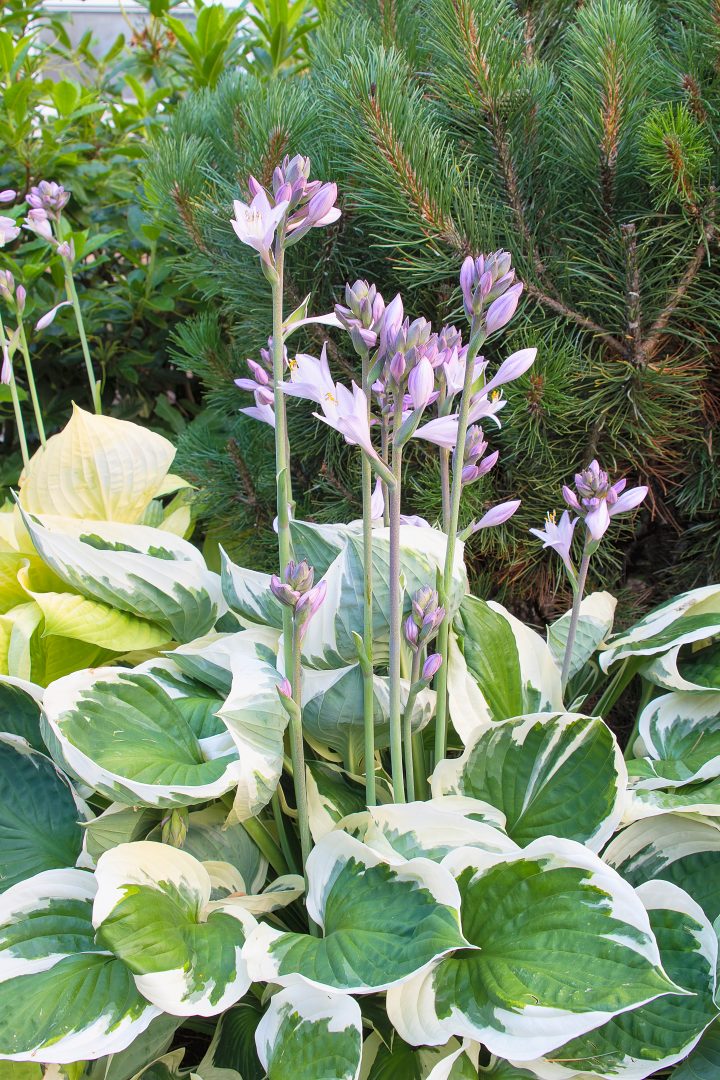
Mulch
Mulch is a great way to keep moisture in the soil and prevent weeds from growing in your garden.
When the plants are still small, I like to spread a 3″ to 4″ layer of mulch around the plant. (That’s thicker than some people use, but I find it works the best).
Make sure it doesn’t go all the way up to the stems since that can cause the plant to develop crown rot.
Once Hostas get bigger, mulch may not be as necessary. The leaves often grow thick enough to act as their own moisture and weed barrier. (Although adding some extra mulch certainly wouldn’t hurt!)
Fertilizing
The best way to fertilize Hostas is to apply a layer of compost around the plants when they start to grow in the spring.
If you prefer to use a chemical fertilizer, look for one that has even numbers all the way across (like 10-10-10). Using a fertilizer with too much Nitrogen can reduce the colors in the leaves and make the foliage more susceptible to disease.
Brush off any granular fertilizer that gets stuck on the leaves since it can burn holes in them.
Don’t fertilize after mid-summer since this will promote new growth that can get frost damage and end up hurting the plant.
Winterizing
Hostas die back in the winter and require a cool period before growing back in the spring.
But they don’t require much work to winterize them. There are only a couple of things to keep in mind:
- Once the leaves have died in the fall, cut them off all the way to the ground, and remove them. This will help prevent slugs, rodents and diseases from attacking the new leaves in the spring.
- If you live in gardening zones 7 or higher, adding mulch around the Hostas in the fall will help stabilize the soil temperature. This helps to prevent freeze and thaw cycles that can kill the plant. (Temperatures are cold enough in zones 6 and lower that this isn’t really necessary).
Pruning
Hostas don’t require pruning during the summer to be healthy.
For tidiness, you can remove the flower stalks at any time (even before blooming if you think they detract from the look of your Hostas).
The odd damaged leaf can be removed to make the plant look better.
But if all the leaves are damaged (from slugs or a hail storm for example), I usually leave them so the plant has the best chance of rejuvenating itself.
As I mentioned above, cut off the leaves to the ground (and clear them) after they have died in the fall to help prevent pests and diseases in the spring.
Transplanting
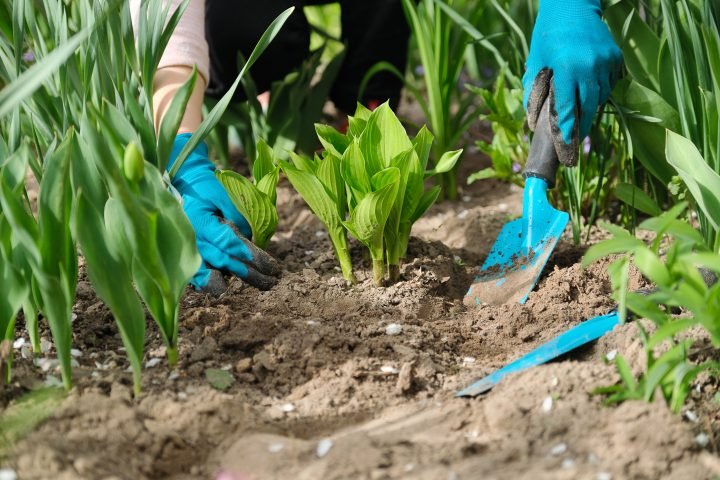
Transplanting Hostas is best done during cooler weather in the spring or early fall.
For fall transplants, do it early enough in the season to give the plants time to get established before winter hits.
As with any transplant, it helps to have the hole dug in the new location before you start digging up the plant. That way you can transfer it to its new location and put it back in the ground immediately which can reduce transplant shock.
Hosta roots tend to grow more horizontally than vertically so you’ll need to dig out a big circle around your plant.
Then make sure to get as much of the root ball as possible, which can mean digging down 18 inches if you have a big plant.
Plant the Hosta in its new location at the same level in the ground as it was before. Then mulch and water well for a few weeks to help it get re-established.
Dividing
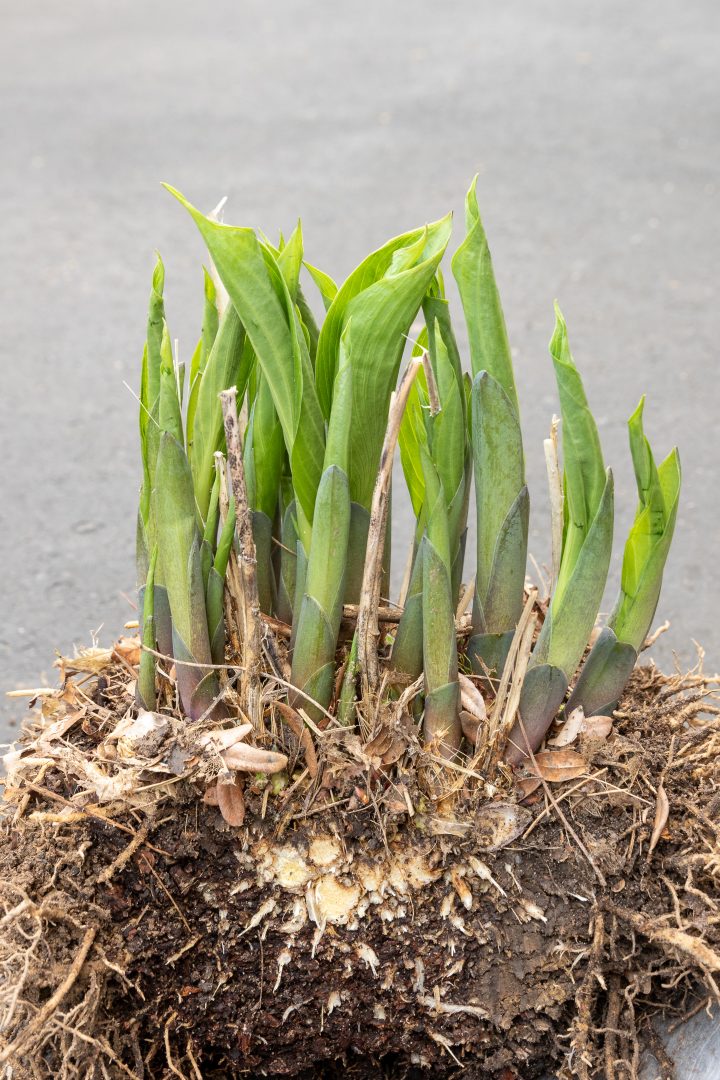
Hostas grow slowly so they don’t need to be divided very often (if at all).
Unless they have grown too big for the spot they are planted in, or you just want more of them, dividing Hostas once every 5 to 10 years will be often enough.
Even then, dividing may not be necessary. If the plant looks healthy, you can leave it alone.
Having said that, they are one of the easiest plants to divide and are very forgiving. So if you have Hostas that are too big for you garden, don’t be afraid to try.
Dig up the entire root ball (which is easier said than done if it is a large hosta!)
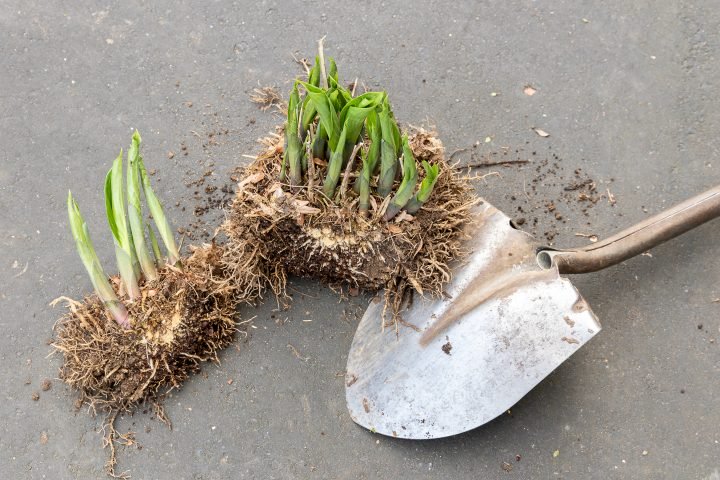
Then cut from the crown down through the roots with a knife or sharp spade.
You can even divide them into more than one plant if you want to spread them around.
Just remember that the smaller plants may not bloom the first year and will take longer to get established. To get them off to a good start, I usually leave at least 3 stalks on each new plant.
Since Hostas don’t often grow true from seeds, dividing them is the best way to propagate them.
For more details, read how to divide a Hosta.
How To Care For Hostas In Pots
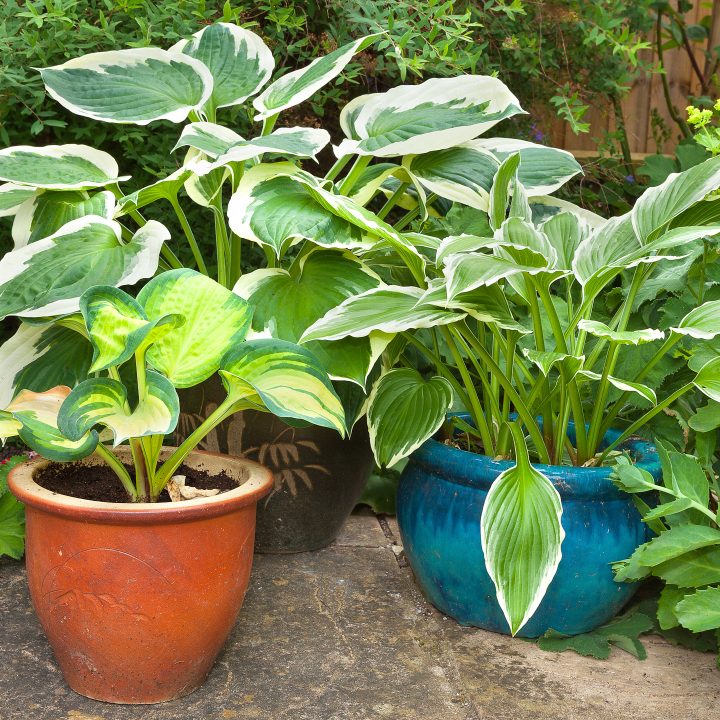
If you want to grow Hostas in pots, you’re in luck!
Many of the smaller Hostas will do quite well in containers, especially if you follow these tips:
- Choose a container that is at least 12″ across so that the soil won’t dry out as fast. Larger is better.
- Cover any open soil with mulch to keep the moisture in.
- Make sure the pot has good drainage. Hostas won’t live long if their roots are standing in water.
- As with any potted plant, fertilize and water regularly.
- After the leaves have wilted in the fall, cut them all the way down and cover the top of the pot with at least a 3″ layer of mulch. Remove the mulch around the top
- If slugs are a problem in your area, place copper strips around the edge of the container (I cut them from this product*). Slugs and snails don’t like crossing copper so they’ll avoid your potted plants.
Pests
Hostas have very few diseases and are generally very low maintenance.
But there are a couple of garden pests that can be a problem – slugs and deer (or rabbits).
Slugs
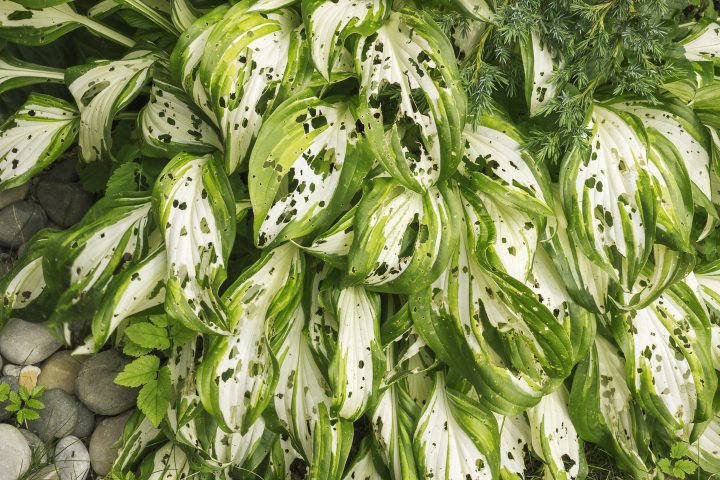
If your Hosta leaves look like this, chances are slugs or snails have made themselves at home.
In areas where these critters are a problem, they will probably be the biggest issue your Hostas have.
There are a few things you can do to deter slugs and snails:
- Plant Hostas with thick, waxy leaves which are less likely to get slug damage. (Find our list of slug-resistant varieties HERE).
- Surround the base of your plants with an organic slug baits that have an active ingredient of iron (or ferric) phosphate. I like this one.*
- As I mentioned above for containers or raised beds where slugs cannot come up through the ground, try surrounding the containers with copper strips. (I cut them from this product*). It will stop the critters in their tracks.
Find more ways to deal with slugs HERE.
Deer and Rabbits
If you wake up one day and your beautiful Hostas are gone (or have been reduced to shreds), they have probably become part of a deer or rabbit buffet.
When these animals are hungry enough, it can be almost impossible to keep them out of your Hosta garden (they love the stuff!)
But there are a couple of things you can try:
- Plant the Hostas with deer-resistant herbs like chives and mint. The scent of the herbs may convince them to go elsewhere.
- Spray a deer and rabbit repellent (I like this one*) around the edges of your garden. You’ll need to re-apply after heavy rain, but it does work pretty well.
Find more ways to keep deer out of your garden HERE.
Where To Buy Hostas Online
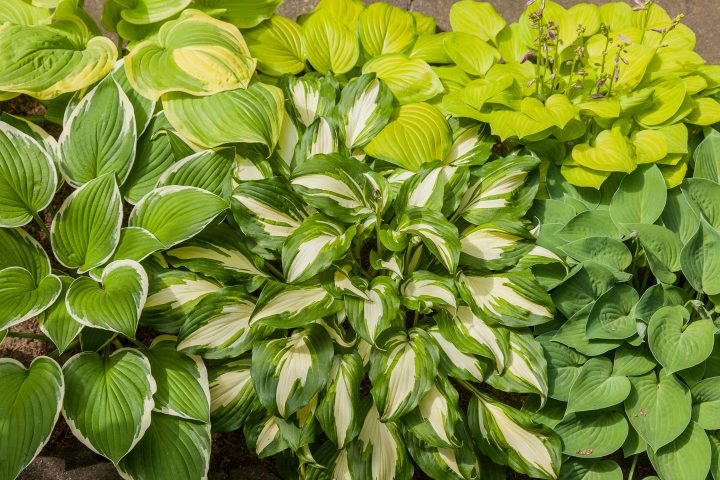
If you’re wondering where you can find Hostas online, here are a few of my favorites:
Etsy* – Etsy has a really good selection of Hostas from a bunch of different growers, most of which sell small potted plants that are in very good condition. (I read the reviews if I’m not sure about the seller).
K. van Bourgondien* – K. van Bourgondien is part of an online plant-selling conglomerate that mostly ships bare root plants.
They don’t have the best selection of Hostas, so the reason they’re on my list is their prices. (I always wait for a sale to get the best deals).
Although they don’t give refunds, they will give you a credit if the plants don’t grow (which is always a concern when they are shipped bare root).
N.H. Hostas and Companion Plants – As you might have guessed from the name, N.H. Hostas has a huge selection of Hostas that are mostly shipped as small starter plants.
If you’re looking for a special cultivar, you’re likely to find it here.
That’s it for my Hosta care tips. Hopefully, you’ve learned everything you need to know about growing Hostas!
More Hosta information you might like
Have comments or questions about Hosta care? Tell us in the section below.
Pin It So You Don't Forget It!
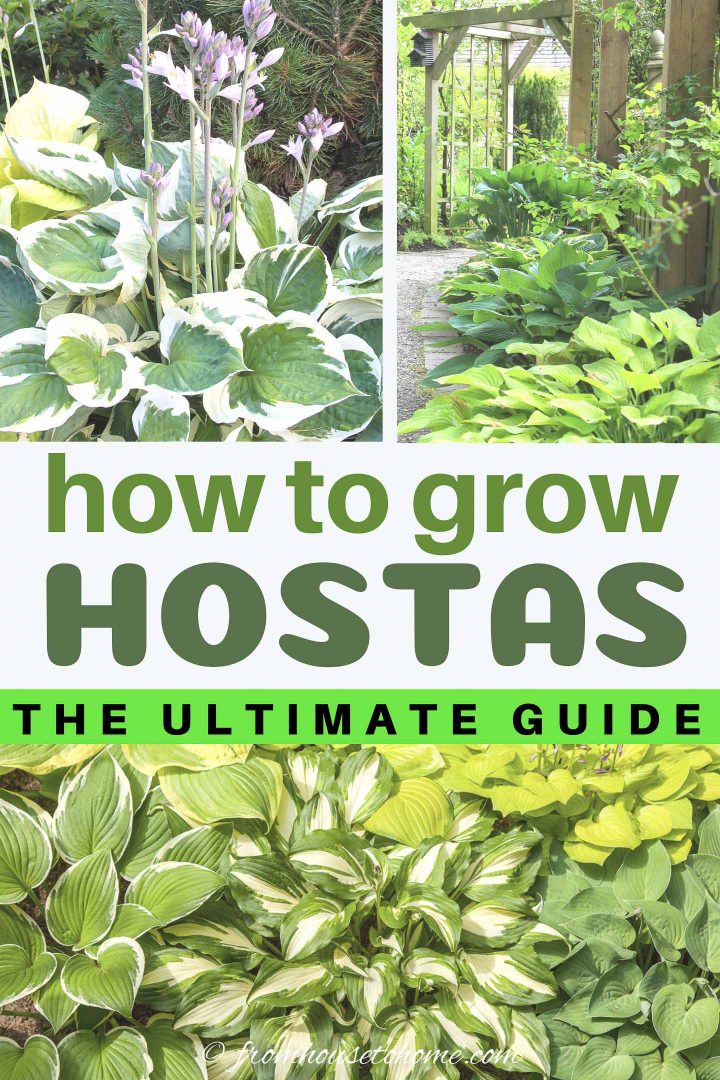
This post was originally published on June 6, 2020 but was updated with new content on November 23, 2024.













Would copper pennies work as a deterrent to slugs?
Hi Helen…I haven’t tried that, but they might if you could spread them out in a solid layer that covers the soil.